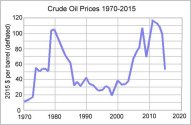Economy and Electricity Prices
| 16 August 2016: | 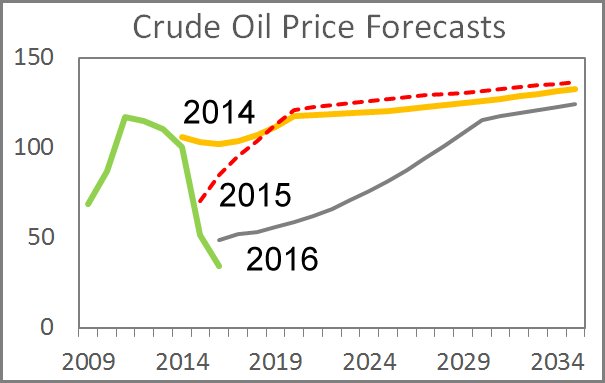 |
|
Useless fuel price forecasts
The fuel price forecasts, published by Danish authorities, are supposed to be a guide for energy planners. From 2015 to 2016, the expected crude oil price in 2020 fell from 120 DKK/GJ to 49 DKK/GJ. The variation shows the magnitude of the uncertainty of the forecast. Energy planners and investors should carefully analyze and understand the extreme cases in order to prevent economic losses.
Here is my comparison.
|
| 31 July 2016: |  |
|
Lower and more Equal Electricity Wholesale Prices in Europe
The European Commission has published a new volume of the European quarterly wholesale electricity prices. Average wholesale prices for fourth quarter of 2015 and for first quarter of 2016 have been added to the short statistics.
From fourth quarter 2015 to first quarter 2016 the average spot price for all countries concerned has decreased from €/MWh 43.5 to €/MWh 33.2. |
| 16 May 2016: | 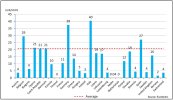 |
|
Lack of Harmonization of European RES Support Schemes
European electricity consumers support renewable energy, but at different levels from 0 in Finland to 40 €/MWh in Italy. EU considers the Danish support scheme (PSO) to be in conflict with EU competieion rules. Therefore, the Danish government wants to move the RES support from the electricity bill to the state budget. This would not only bring us in line with Finland, but also remove the PSO cost from Danish enterprises.
See my note on RES support and industrial electricity prices in Europe. |
| 29 March 2016: | 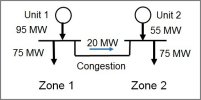 |
|
Lucrative Bottlenecks
The average wholesale price levels for electricity can vary between countries by a factor five. The main reasons are grid bottlenecks and inefficient market arrangements which prevent the equalizing of prices across Europe.
The bottlenecks also provided revenues to the European grid owners. Read Lucrative Bottlenecks, which explains the principle of the bottleneck fees and presents Danish results. |
| 11 November 2015: | 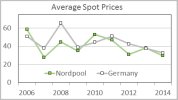 |
|
4% Annual Decrease of Electricity Spot Prices since 2006
Electricity spot prices in Denmark follow either Nordic or German market prices in most hours. Both the Nordic and the German spot prices have a significant decreasing trend, which is likely to continue. Increasing subsidies for renewables must counterbalance decreasing revenues from the wholesale market.
|
| 23 October 2015: | 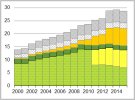 |
|
Will German Electricity Prices be Stable Henceforward?
The Federal Ministry for Economic Affairs and Energy in Germany promises cheaper electricity. Are they too optimistic?
Is the same trend valid for Denmark? Read my evaluation
|
| 17 September 2015: |
|
Consumer Prices and Wholesale Prices in Europe are Moving Apart
Agora-Energiewende has in a comment from 15 September 2015 observed the increasing gap between consumer prices and wholesale prices of electricity. Agora-Energiewende promises that consumer prices in Germany will not increase in 2016, "if electricity dealers calculate honestly".
Link to the story at Agora Energiewende and to my comment.
|
| 18 August 2015: | 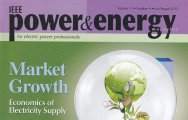 |
|
IEEE Articles on Challenges and Options in the Electric Industry
The July/August 2015 issue of the IEEE Power & Energy Magazine brings a series of interesting articles under the common head line, "Market Growth - Economics of Electricity Supply".
I made a review of the articles, but recommend reading the full versions. A brief review cannot give a fair understanding of the complex issues. |
| 24 June 2015: | |
|
Confusing Electricity Declarations
94% of the Danish electricity consumers pay increasing PSO tariffs for renewable electricity. Instead, they get and increasing share of nuclear energy, according to the EU declaration of electricity origin.Here is the explanation
|
|
| 16 February 2015: | |
|
The Average Market Value of Wind Energy in 2014
The total amount of wind energy has been used as a proof of the successful Danish wind programme. The market value of the energy output also deserves attention.
See my brief note: "The Market Value of Wind Energy".
|
|
| 11 January 2014: | 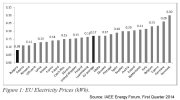 |
|
A Sad Story
Danish electricity consumers have reached a top ranking on a list of EU electricity prices.
Read my comment
|
| 13 December 2014: | |
|
12% Increased Electricity Cost due to Wind Power
The Rockwool Foundation has published a report on the cost of wind power in Denmark for the years 1998-2011. The report finds an average increase in electricity cost at 12%. This may be a fair price for the achieved reduction in carbon emissions. The question is why such cost-benefit calculations have been absent in the Danish climate debate.
|
|
| 26 July 2014: | |
|
Misleading Report from Danish Energy Agency (DEA) on Cost of New Wind Power
DEA knew that the market value of wind energy is considerably lower than the value of dispatchable power. Nevertheless, DEA has plaid down this information in a new report on production costs for ten different technologies.
See my evaluation here.
|
|
 |
20 March 2014: |
|
Skyrocketing Electricity Prices in Denmark
Since 2000 Danish electricity prices have increased remarkably. What happened? Nobody seems to feel responsibility for the cost of electricity in Denmark.Here are my observations - (Danish version)
|
|
| 21 December 2013: | |
|
Energy Savings Cause Increasing Taxes
Due to changed patterns of energy consumption in Denmark the revenue of energy taxes is falling. This is compensated by new taxes or higher tax levels so the consumers must pay both the full tax and the more expensive energy solutions. So far the public planning has not shown this consequence. |
|
| 7th December 2010: |
|
More expensive electricity in 2011
In East Denmark the spot price of electricity today climbed to a new record and the media predict increased electricity prices in 2011. What is going on?
See my guess here. |
Opdateret d. 1.5.2017

